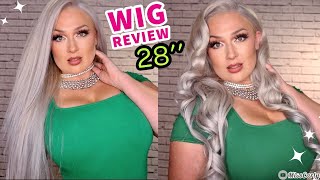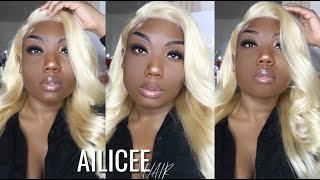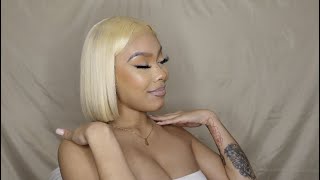Your Children Are Back In School, So let’s Talk About Lice
 “Can black people get lice?” I know what you are thinking. “Absolutely not!” “Why is this even a topic?” Yes, I know I caught you by surprise; however, this is a relevant health issue. With school back in session, and children back with their friends, participating in sports and sharing locker rooms, I thought, yelp! No better time like the present to discuss it.
“Can black people get lice?” I know what you are thinking. “Absolutely not!” “Why is this even a topic?” Yes, I know I caught you by surprise; however, this is a relevant health issue. With school back in session, and children back with their friends, participating in sports and sharing locker rooms, I thought, yelp! No better time like the present to discuss it.
What exactly are lice? Lice (louse in singular) are wingless parasites that are about two to three millimeters in length. You probably heard of them as being called “nits”, which is half correct. Nits are the eggs that the lice lay, which would take about a week to hatch, and in turn, become lice. Lice creep and crawl around the head and the neck. Once they find a spot, they cling to the hair in order to get to their main food supply – human blood. These creepy crawlers feed so much that this could lead to possible sores and scabs on the scalp.
There is an odd school of thought out there which says that black people can’t get lice, as I mentioned before. Well, this is not entirely true. Yes, it is rare for black people to have cases of lice, but lice have no prejudice when it comes to what scalp they want to feed on. It is a fact that anyone with straight or loosely curly hair has a higher chance of getting lice, than those with coily and kinky* hair. Remember when your mother was greasing your scalp with Blue Magic, or Softee Grease every other day?
Using products which are oily and greasy will cause your hair to be a difficult terrain to grasp onto the hair, let alone be able to lay eggs on your scalp. What about the many plaits little girls had installed during the weekend, which lasted for the week? Those protective styles protected the child’s scalp and tresses from contracting lice better than the little girls who had their hair out, swinging and swaying throughout the day. Lice definitely flock to the straight and looser curls, hence the reason people think that “black people” cannot contract lice.
Now, fast forward to the present time when we have more diverse hairstyles. We might choose to straighten our children’s hair from time to time, which can make them more susceptible to lice. Nowadays, our products are petroleum and mineral oil* free in comparison to years ago. We also wash our hair more often, and as weird as this sounds, lice are attracted clean hair. I am not saying that black hair care today makes it easier for black people to contract lice, but make an observation of what you use in your hair now, versus what was used before.
With that said, it helps to get a little educated on how we can reduce our chances of contracting lice. Here are the symptoms of a possible lice infection, detection and treatment process, if lice are contracted:
 Be proactive
Be proactive
As I have stated before, school is back in session. Children will be outside for recess, using the same classroom utensils, and probably have their hair pulled on. It’s inevitable; they are children. Just because your child may not get lice, he/she may still be exposed to others who do have lice. However, a failure to plan is a plan to failure.
1. Be prepared and stock up now. Go out now and purchase a lice shampoo, and a nit comb. Have that ready in your medicine cabinet, so that you won’t have to worry about purchasing anything on that day, if your child does get lice.
2. If you don’t want to purchase the chemicals, there are Tea Tree Oil* Lice Treatments. This is an alternative herbal treatment, which has an anti-bacterial agent as the main ingredient. This is a great buy if you want to avoid the harsh remedies in your child’s head. The downfall of this product is that it kills lice, but not nits. As I have stated before, nits are the eggs of lice, and they hatch within the week. If you want to try this product, before watchful and aware when cleansing your child’s scalp.
3. Educate your child about keeping their hands to themselves. Of course this is a tough one, because children mouth the same things, eat on the same popsicle, and try on each other’s headbands*. However, try to inform your child not to swap clothes with friend, share each other’s brushes, and keep their hands to themselves. Keeping your personal space to yourself minimizes the transfer of lice.
4. Protective styling is a great way to prevent lice. Hair which is twisted and braided creates a difficult time for lice to get onto the scalp, because the hair is tightly bound together. Even the shrinkage of the Afro minimizes coming into contact with an infected person, or item. Long hair which hangs and sways can cause lice to spread easily.
5. Make sure the scalp is moisturized and sealed properly. Not only is this great for the child’s scalp, but slippery hair is difficult for lice to grasp onto and lay their eggs as well. You don’t need to go back to the Blue Grease, but moisturizing and sealing your hair properly provides a protective barrier around your child’s hair.
Being proactive will provide great result for everyone, lessen and eliminate any further spread for a while. Making the steps to prevent lice is much better than going through the symptoms and treatment processes to get rid of them.
Symptoms of Lice
Sometimes the preventative measures do not always work, so you need to know what to look for when you suspect lice. If there is a constant need to scratch the scalp, or it is so itchy that you and/or your child are creating scars in the scalp, it could be a sign of possible infestation. Scratching like crazy with no restraint, or complaining so much about the itching could be a cause for concern in checking for lice. Sure, this could just mean that a hair wash is needed, and there are no lice present. However, if those symptoms are prevalent, then it is important to check the scalp and hair out.
 Detection and Treatment Process
Detection and Treatment Process
So you or your child have the sure infestation of lice; please don’t panic. Yes, contracting lice is scary, but they are not known to carry any disease. So don’t scare yourself, or your children. If you have lice, I suggest you go to the medical center to get them picked out. Have your scalp treated to make sure you are clear. But if your child has lice, you can do the detection and treatment process yourself. Follow these steps:
1. Sit your child down and inspect their head thoroughly. Make sure you have gloves, goggles, and a plastic cap on your head. Search through your child’s head with a nit comb in order to see how much infested his/her head is. Once you have a clear view, get ready for the shampoo process.
2. Get your lice shampoo and the nit comb ready. I suggest that you wash your child’s head in the kitchen sink or the bathroom sink, and not the bathtub. Follow the directions on the lice shampoo. This kills the lice completely, and stops the nits from hatching. Once you have completed the directions for the shampoo, bring a chair in the area where you are working. Sit your child on the floor comfortably, and have a lice container ready. Start picking your child’s head for lice and nits, and place them in the container. Once you have picked them all out, close the lid and throw away outside in the disposal, or the dumpster.
3. Do this treatment for the next two to three weeks. Make sure you follow up on the shampoo treatment, whether every other day or once a week. Do this treatment for the next few weeks. There is a possibility that all the lice may not be eliminated, so more shampoos will be needed. This way, you get rid of the last of the lice, and any nits which are planning on hatching.
Other Information About Children and Lice
Now that the detection and treatment process is done, your child is ready to go and play again. Here are a few things you can do for your child to lessen the risk of contracting lice again:
1. For girls, do a protective style or tie it back, nice and tight. Try not to have your child’s hair out for the next few weeks. This will keep your girl’s hair to herself and lessen the risk of contracting lice again.
2. For boys, cut their hair completely, or do a protective style. If you don’t mind your little boy’s hair cut short, then go ahead and cut it. That is the quickest way to rid the head of lice, and stop contracting it again.
3. For kids with dreadlocks, they need to be cut. Unfortunately, there is no way to save the locs. The lice burrow inside the hair and lay multiple eggs, which in turn hatch generations of lice. It’s dramatic and disheartening, but that is the only way to rid your child of lice.
So now you know everything there is to know about lice. There is no doubt that anyone is susceptible to head lice, regardless of race, but it is definitely dependent on hair texture and structure.




